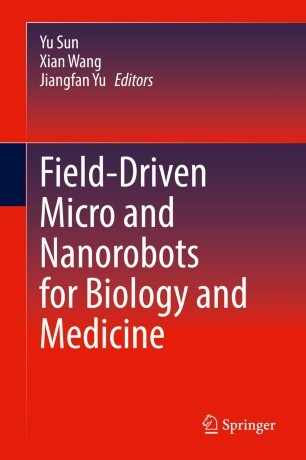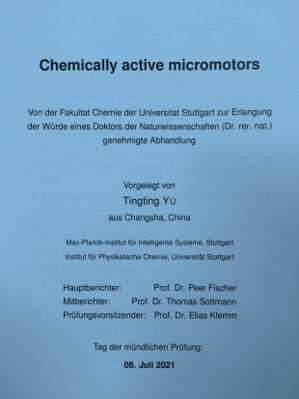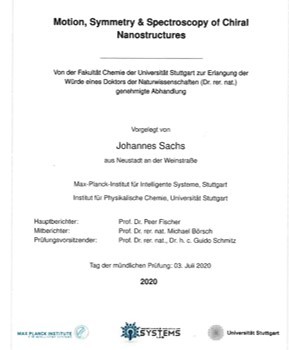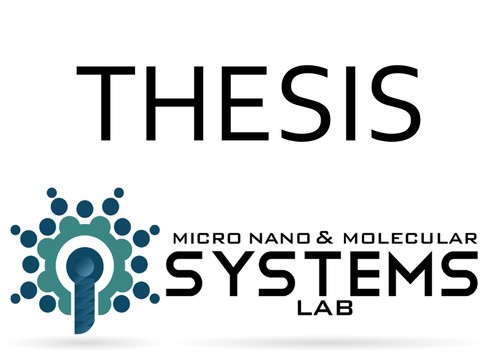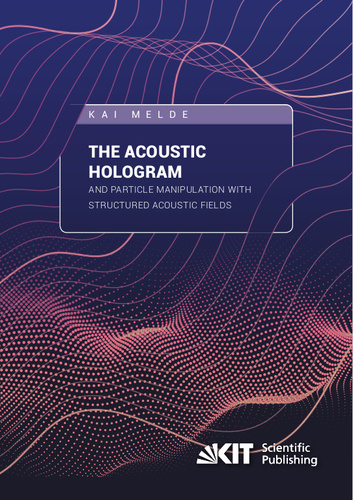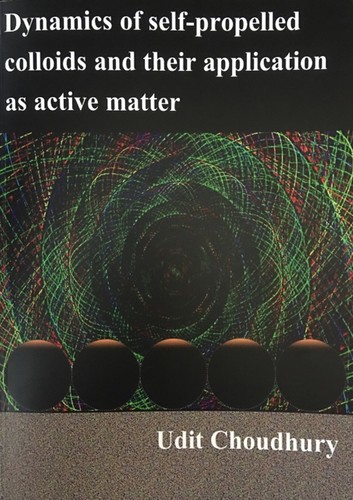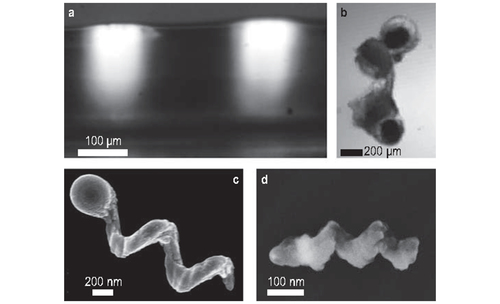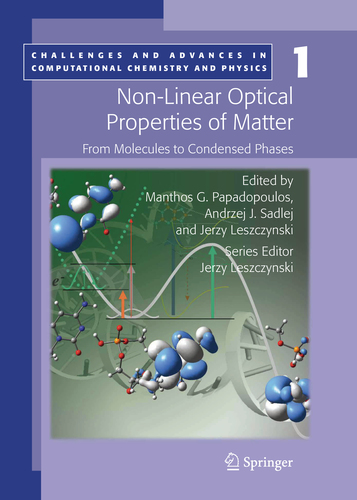20 results
(View BibTeX file of all listed publications)
2022
Magnetic Micro-/Nanopropellers for Biomedicine
Qiu, T., Jeong, M., Goyal, R., Kadiri, V., Sachs, J., Fischer, P.
In Field-Driven Micro and Nanorobots for Biology and Medicine, pages: 389-410, 16, (Editors: Sun, Y. and Wang, X. and Yu, J.), Springer, Cham, 2022 (inbook)
In nature, many bacteria swim by rotating their helical flagella. A particularly promising class of artificial micro- and nano-robots mimic this propeller-like propulsion mechanism to move through fluids and tissues for applications in minimally-invasive medicine. Several fundamental challenges have to be overcome in order to build micro-machines that move similar to bacteria for in vivo applications. Here, we review recent advances of magnetically-powered micro-/nano-propellers. Four important aspects of the propellers – the geometrical shape, the fabrication method, the generation of magnetic fields for actuation, and the choice of biocompatible magnetic materials – are highlighted. First, the fundamental requirements are elucidated that arise due to hydrodynamics at low Reynolds (Re) number. We discuss the role that the propellers’ shape and symmetry play in realizing effective propulsion at low Re. Second, the additive nano-fabrication method Glancing Angle Deposition is discussed as a versatile technique to quickly grow large numbers of designer nano-helices. Third, systems to generate rotating magnetic fields via permanent magnets or electromagnetic coils are presented. And finally, the biocompatibility of the magnetic materials is discussed. Iron-platinum is highlighted due to its biocompatibility and its superior magnetic properties, which is promising for targeted delivery, minimally-invasive magnetic nano-devices and biomedical applications.
2021
Chemically active micromotors
University of Stuttgart, Stuttgart, July 2021 (phdthesis)
Motion is a mark of living systems. It is realised by energy conversion to perform vital tasks and is thus of great importance for all living systems. One approach to achieve motion is by including active motion of micro/nano objects. Unlike in the fluid at the macro scale, active swimming cannot be achieved by reciprocal movements at the micro scale. Breaking symmetry at the micro scale thus becomes a critical issue. The challenge is that this often requires outside intervention to build systems that already show symmetry breaking. And another challenge is that there are few examples where active microscale motion can cause a macroscopic effect, or facilitate a useful application.
In the first part of the thesis, the first challenge is addressed and a new route of spontaneous symmetry breaking is developed. Microscale motion in artificial chemical systems has thus far been realised in chemical motion. These are microparticles that are fabricated to possess two different halves, known as Janus particles. One half is catalytically active and drives the self-phoretics. The Janus micromotors are generally fabricated using fabrication techniques such as PVD, CVD. These techniques require deposition onto a surface, which limit the number of structures that can be fabricated.
In this work, we show that two species of isotropic (symmetric) micro particles, one is a photocatalytically active particle TiO2, the other is a passive SiO2 particle can spontaneously form a dimer structure. Under UV illumination, a chemical gradient is generated around the photo active particles. The passive particle is attracted toward the highest chemical concentration of the reaction product towards the active particle. A dimer forms that starts to self-propel. The speed of the dimer can be controlled by adjusting the UV intensity.
The mechanism of the dimer formation is examined and shown to be due to a diffusiophoretic interaction between the active and the passive particle. The interaction force and the propulsion of the dimer swimmers are examined. The role of salts, particle size and concentration are studied. An additional repulsion interaction is observed between two active particles. An optimal volumetric particle density of ≤ 2% is identified for dimer formation and the dimers remain active for > 20s. This thesis thereby demonstrates a self-assembly route where the chemical activity causes dimer formation and thus spontaneous symmetry breaking which does not require any physical fabrication steps.
Most work thus far has studied the behaviour of individual chemical micromotors (Janus particles) at the micro scale. To induce a macroscopic effect and facilitate an application using individual micro/nano active particles requires cooperative effects of many "micromotors". Therefore, we developed a novel fabrication method which allows a large number of Janus structures to be assembled in an ordered manner. We fabricated an array of photoactive Janus micro structures on a surface by glancing angle deposition (GLAD) onto a photolithography patterned substrate. Illuminating the surface of Janus array structures with UV light initiates the water splitting reaction, which produces an osmotic flow around the micro structures. The osmotic flow at each structure is coupled with the flows generated by the neighbouring particles. The microscopic osmotic flow thereby results in a macroscopic fluid flow. By adjusting the spacing between single micro structures, an optimised pumping velocity is achieved with a micro pillar diameter of 2 μm and a spacing of ∼ 2 μm. We compared the pumping performance of the micro pillar array with other topological chemical structures, such as micro Janus bar arrays and 2D micro Janus disk arrays, and find that the 3D structure is essential to generate a chemical gradient on the surface. We believe that this is the first chemical micropump formed by chemically active Janus structures. The active pumping surface can provide a flow speed of up to 4 μm/s.
This active surface consisting of micropillar arrays can be easily integrated in most microchannels and serve as an on-board micropump. A theoretical model and numerical simulations are presented to describe the microchannel pumping. The theory reproduces the experimentally measured flow profiles very well. We have thus established a new type of chemical pump, which can wirelessly pump fluid in a microchannel, and the pumping volume rate and flow profile can be modified simply by changing the nature and orientation of the self-pumping walls.
Advanced Diffusion Studies of Active Enzymes and Nanosystems
Universität Stuttgart, Stuttgart (und Cuvillier Verlag, Göttingen), February 2021 (phdthesis)
Enzymes are fascinating chemical nanomachines that catalyze many reactions, which are essential for life. Studying enzymes is therefore important in a biological and medical context, but the catalytic potential of enzymes also finds use in organic synthesis. This thesis is concerned with the fundamental question whether the catalytic reaction of an enzyme or molecular catalyst can cause it to show enhanced diffusion. Diffusion measurements were performed with advanced fluorescence correlation spectroscopy (FCS) and diffusion nuclear magnetic resonance (NMR) spectroscopy techniques. The measurement results lead to the unraveling of artefacts in enzyme FCS and molecular NMR measurements, and thus seriously question several recent publications, which claim that enzymes and molecular catalysts are active matter and experience enhanced diffusion. In addition to these fundamental questions, this thesis also examines the use of enzymes as biocatalysts. A novel nanoconstruct – the enzyme-phage-colloid (E-P-C) – is presented, which utilizes filamentous viruses as immobilization templates for enzymes. E-P-Cs can be used for biocatalysis with convenient magnetic recovery of enzymes and serve as enzymatic micropumps. The latter can autonomously pump blood at physiological urea concentrations.
2020
Motion, Symmetry & Spectroscopy of Chiral Nanostructures
Universität Stuttgart, Stuttgart (und Springer, Cham), July 2020 (phdthesis)
Nanostructures are of interest for a broad spectrum of potential applications. For biomedical tasks, small nanoswimmers could help realize targeted drug delivery or minimally invasive surgery, which necessitates a comprehensive understanding and control of their motion. As an optical sensor, single plasmonic nanostructures can enhance the weak optical signals associated with biologically-important handed (chiral) molecules, and thus potentially lead to much higher detection sensitivities and improved selectivities. Both, the motion and spectroscopic behavior of nanostructures is closely related to the symmetry they possess. For propulsion at small scales it is well known that symmetry is important. For instance, the bacterial flagellum has a chiral corkscrew shape to allow non-reciprocal motion. One can therefore wonder if chirality is essential, and if indeed this is the simplest shape for propulsion, or if other structures – possibly ones that are simpler to fabricate – can also show propulsion when they are rotated. Another aspect that relates to the symmetry is the spectroscopic observation of nanostructures. Especially in chiral structures both the shape itself as well as the orientation in space determines optical signals. It is therefore important to be able to dis-entangle these effects.
To shed light on this, this thesis presents experiments that capture the active motion and chiroptical spectroscopy of artificial nanostructures at low Reynolds number (Re), and examines the role chirality plays in these phenomena. Against previous expectations and reports, it is shown that a propeller does not need to be chiral to locomote and the first truly achiral propeller at low Re is reported. Similarly, a careful examination of the spectroscopy of plasmonic nanostructures shows that structures do not need to be chiral to give rise to chiroptical signals. A novel spectrometer was constructed to observe individual nanostructures. Thereby it has been possible to identify an observable, which has not been measured previously – that permits the true chiroptical spectrum to be obtained from a single nanoparticle suspended in solution. The basis for the presented experiments is the fabrication of micro- and nanostructures with simple and complex, achiral and chiral shapes via Glancing Angle Deposition (GLAD).
The first part of this thesis considers active motion exhibited by highly symmetric micro- and nanoswimmers. Owing to the scallop theorem, reciprocal motion does not lead to a net translation at low Re, and other swimming strategies must be exploited, e.g. rotation-translation coupling. Previously, chirality was assumed to be required to efficiently couple rotation to translation at low Re, as is demonstrated by the corkscrew-shaped bacterial flagellum. However, a symmetry analysis suggested that much simpler shapes are potentially also propulsive if they are rotated in a non-trivial way. This would have important implications as then a novel class of micro- and nanoswimmers with highly symmetric, and easier to fabricate shapes, become feasible. Here, the propulsion characteristics of V-shaped objects that are driven by means of an external torque are investigated. The torque was either exerted by an external magnetic or an electric field and the ”V”-shaped particle had a corresponding dipole moment. Experiments with macroscopic as well as microscopic rigid bodies revealed that the orientation of the dipole with respect to the body plays a crucial role for their ability to convert a rotation into a translation. Symmetry arguments are developed, which accurately predict whether or not the object is propulsive at all, and additionally if it moves uni- or bi-directionally. It is thereby unequivocally shown by theory and experimental evidence that chirality is not a prerequisite for efficient rotation-translation coupling at low Re but that propulsive objects are necessarily chiral if they are driven magnetically. Surprisingly, rotation of a truly achiral object will also lead to a propulsion, which is experimentally demonstrated for the first time utilizing an electrically driven ”V”-shaped particle. Because chirality, i.e. Pb-odd symmetry, is not a requirement, an extended analysis that also includes the object’s symmetry under charge conjugation (CÒ) is employed to explain and predict the correct propulsion characteristics of arbitrary shaped objects by means of rotation-translation coupling.
In contrast, spherical objects are unable to utilize rotation-translation coupling. However, beads with unequal chemical reactivities on the two ”faces” of their spherical body, so called Janus particles, can show enhanced diffusion if a suitable chemical substrate is provided. A catalytic reaction converts the intrinsic asymmetry of the particles into a pressure gradient, which leads to a self-generated motion. Most reports of self-propulsion to date concern larger microparticles. In this thesis, it is examined if this means of propulsion can also be realized in sub-micron sized Janus particles. The exact propul-sion characteristics are not fully clear in most chemically-driven particles and how their enhanced diffusion scales with size. Because of their small size the observation of individual particles is not possible and thus high density particle ensembles are observed by light scattering techniques, i.e. Dynamic Light Scattering (DLS), Differential Dynamic Microscopy (DDM) and Super-Heterodyne Laser Doppler Velocimetry (SH-LDV). In contrast to DLS and DDM, SH-LDV is identified as a versatile and suitable technique for the characterisation of active motion exhibited by Janus nanoparticles. First results on their size-dependent enhanced diffusion are presented, which show that this form of symmetry-breaking is effective at the smallest of scales.
The second part of this thesis considers the spectroscopic response exhibited by chiral and achiral shaped nanoparticles measured in a novel single-particle spectrometer. It is based on dark-field microscopy and contains a balanced detection setup, which was built to record the Circular Differential Scattering Intensity (CDSI) of a single nanoparticle, i.e. the difference in scattering intensities for left- and right-circularly polarized light. This is known as chiroptical spectroscopy and typical setups are limited to the examination of stationary single particles. However, problems arise as their spectra appear distorted owing to a fixed light-object symmetry as well as interactions with the surface to which the particles are adhere. In contrast, the approach employed in this thesis opens up the possibility to record chiroptical spectra in ”one shot” and hence observe single mobile nanoparticles away from a surface. Crucially, a freely suspended particle in a liquid randomly reorients due to Brownian motion, which leads to an isotropic sampling of all spatial orientations. Based on this principle, this work presents time-resolved spectroscopic observations that yield snapshots for a particular alignment during the re-orientation of the particle, and the average of the time-series of snapshots provides a true chiroptical spectrum of a single nanoparticle in bulk solution away from a surface. Remarkably, this is the first time that the chiroptical spectrum of a freely diffusing nanoparticle has been observed. Experiments confirm that the novel approach detects intrinsic chirality of a single nanoparticle and additionally it is shown how even achiral particles can exhibit apparent chirality for stationary orientations. A magnetic and plasmonic nanohelix, whose alignment is controlled in an external magnetic field validates the crucial dependence of the chiroptical spectra on the light-object symmetry. Finally, the ergodicity of this chiroptical spectroscopy is demonstrated by showing the equality between time-averaged single-particle and traditional ensemble-averaged spectra. This has important consequences as now the same information de-duced by typical measurements conducted on many particles in a cuvette is recovered by utilizing only one nanoparticle. The results presented herein show that the single-particle spectrometer is a promising platform for novel sensing applications.
Soft Microrobots Based on Photoresponsive Materials
In Mechanically Responsive Materials for Soft Robotics, pages: 327-362, (Editors: Koshima, Hideko), Wiley-VCH, Weinheim, 2020 (incollection)
2019
The acoustic hologram and particle manipulation with structured acoustic fields
Karlsruher Institut für Technologie (KIT), May 2019 (phdthesis)
This thesis presents holograms as a novel approach to create arbitrary ultrasound fields. It is shown how any wavefront can simply be encoded in the thickness profile of a phase plate. Contemporary 3D-printers enable fabrication of structured surfaces with feature sizes corresponding to wavelengths of ultrasound up to 7.5 MHz in water—covering the majority of medical and industrial applications. The whole workflow for designing and creating acoustic holograms has been developed and is presented in this thesis. To reconstruct the encoded fields a single transducer element is sufficient. Arbitrary fields are demonstrated in transmission and reflection configurations in water and air and validated by extensive hydrophone scans. To complement these time-consuming measurements a new approach, based on thermography, is presented, which enables volumetric sound field scans in just a few seconds. Several original experiments demonstrate the advantages of using acoustic holograms for particle manipulation. Most notably, directed parallel assembly of microparticles in the shape of a projected acoustic image has been shown and extended to a fabrication method by fusing the particles in a polymerization reaction. Further, seemingly dynamic propulsion from a static hologram is demonstrated by controlling the phase gradient along a projected track. The necessary complexity to create ultrasound fields with set amplitude and phase distributions is easily managed using acoustic holograms. The acoustic hologram is a simple and cost-effective tool for shaping ultrasound fields with high-fidelity. It is expected to have an impact in many applications where ultrasound is employed.
Dynamics of self-propelled colloids and their application as active matter
University of Groningen, Zernike Institute for Advanced Materials, 2019 (phdthesis)
In this thesis, the behavior of active particles spanning from single particle dynamics to collective behavior of many particles is explored. Active colloids are out-of equilibrium systems that have been studied extensively over the past 15 years. This thesis addresses several phenomena that arise in the field of active colloids.
2018
Nanoscale robotic agents in biological fluids and tissues
Palagi, S., Walker, D. Q. T., Fischer, P.
In The Encyclopedia of Medical Robotics, 2, pages: 19-42, 2, (Editors: Desai, J. P. and Ferreira, A.), World Scientific, October 2018 (inbook)
Nanorobots are untethered structures of sub-micron size that can be controlled in a non-trivial way. Such nanoscale robotic agents are envisioned to revolutionize medicine by enabling minimally invasive diagnostic and therapeutic procedures. To be useful, nanorobots must be operated in complex biological fluids and tissues, which are often difficult to penetrate. In this chapter, we first discuss potential medical applications of motile nanorobots. We briefly present the challenges related to swimming at such small scales and we survey the rheological properties of some biological fluids and tissues. We then review recent experimental results in the development of nanorobots and in particular their design, fabrication, actuation, and propulsion in complex biological fluids and tissues. Recent work shows that their nanoscale dimension is a clear asset for operation in biological tissues, since many biological tissues consist of networks of macromolecules that prevent the passage of larger micron-scale structures, but contain dynamic pores through which nanorobots can move.
Colloidal Chemical Nanomotors
Colloidal Chemical Nanomotors, Cuvillier Verlag, Univ. of Stuttgart, June 2018 (phdthesis)
Synthetic sophisticated nanostructures represent a fundamental building block for the development of nanotechnology. The fabrication of nanoparticles complex in structure and material composition is key to build nanomachines that can operate as man-made nanoscale motors, which autonomously convert external energy into motion.
To achieve this, asymmetric nanoparticles were fabricated combining a physical vapor deposition technique known as NanoGLAD and wet chemical synthesis.
This thesis primarily concerns three complex colloidal systems that have been developed:
i)Hollow nanocup inclusion complexes that have a single Au nanoparticle in their pocket. The Au particle can be released with an external trigger.
ii)The smallest self-propelling nanocolloids that have been made to date, which give rise to a local concentration gradient that causes enhanced diffusion of the particles.
iii)Enzyme-powered pumps that have been assembled using bacteriophages as biological nanoscaffolds. This construct also can be used for enzyme recovery after heterogeneous catalysis.
2017
Programmable chiral nanocolloids
EPFL, July 2017 (phdthesis)
Nanoparticles promise a variety of application in energy, medicine, and biology. However, most nanoparticles’ material composition and shape cannot be tuned and so functions have thus far been limited. Moreover they are often also chemically unstable in solution. Therefore, the overall goal of this thesis is to develop nanoparticles whose function and shape can be programmed and that can be corrosion protected, and to then apply these nanoparticles to sensing tasks in complex biological fluids. A special focus of this thesis is chiral nanostructures. A promising technique to address this is physical vapour shadow growth, namely nano glancing angle deposition (nanoGLAD). This scheme allows the design of new three-dimensional (3D) hybrid nanoparticles as it permits the control over both the shape and material composition of the nanoparticles. Although this method offers the possibility to grow nanoparticles that are functionally programmed, it has so far not allowed the use of many materials that are chemically unstable in solution, which limits the scope of potential applications.
This thesis starts with describing the nanoGLAD growth procedure. A first application is the wafer-scale patterning of unconventional nanoshapes, e.g. tri-layer particles, holes, rings, and hollow domes, which are not possible using state of the art 3D nanofabrication methods (chapter 2). Then, in conjunction with atomic layer deposition (ALD), this thesis shows how the nanoGLAD scheme can be adapted for the fabrication of ‘3D core-shell nanoparticles and nanocolloids’ using unstable and reactive materials. The key concept here is that the core consists of the unstable material which is grown such that the shell contains no voids or defects (chapter 3). Notably, the shapes that can be grown include symmetry-broken chiral nanoparticles, which possess unique spectral properties that make them useful for sensing applications. This thesis uses chiral nanocolloids to realise extremely sensitive plasmonic nanosensors and nanocolloids that can also be used as a nanomechanical probes for active nanorheology. By forming a composite of two materials during growth – one that gives a strong plasmonic response and the other to tune the composite’s dielectric function – plasmonic nanoparticles are presented that show record local surface plasmon resonance (LSPR) sensitivities to date (chapter 4). With the same alloying principle a plasmonic and a ferromagnetic material are combined. The resulting ‘chiral plasmonic ferromagnetic’ particles can be actuated using a magnetic field and this is used to measure the viscosity of blood plasma in the presence of blood cells. The viscosity of blood serum is an important disease indicator, but the measurement using commercial rheometers requires the separation of the blood cells. This is not needed in the nanorheological measurements shown in this thesis (chapter 5).
Chapter 8 - Micro- and nanorobots in Newtonian and biological viscoelastic fluids
Palagi, S., (Walker) Schamel, D., Qiu, T., Fischer, P.
In Microbiorobotics, pages: 133 - 162, 8, Micro and Nano Technologies, Second edition, Elsevier, Boston, March 2017 (incollection)
Swimming microorganisms are a source of inspiration for small scale robots that are intended to operate in fluidic environments including complex biomedical fluids. Nature has devised swimming strategies that are effective at small scales and at low Reynolds number. These include the rotary corkscrew motion that, for instance, propels a flagellated bacterial cell, as well as the asymmetric beat of appendages that sperm cells or ciliated protozoa use to move through fluids. These mechanisms can overcome the reciprocity that governs the hydrodynamics at small scale. The complex molecular structure of biologically important fluids presents an additional challenge for the effective propulsion of microrobots. In this chapter it is shown how physical and chemical approaches are essential in realizing engineered abiotic micro- and nanorobots that can move in biomedically important environments. Interestingly, we also describe a microswimmer that is effective in biological viscoelastic fluids that does not have a natural analogue.
2016
Chiral Metamaterials
Univ. of Stuttgart, April 2016 (phdthesis)
Als Teil meiner Promotion habe ich die Effekte der Lichtabsorption mit zirkularer Polarisation auf kolloidalen Suspensionen und Beschichtungen untersucht, die als Anordnung spiralförmiger Nanopartikel auftreten, welche durch die Nutzung von plasmon aktive Metallen angeordnet werden. Wir haben gezeigt, dass diese Nanopartikel sehr ausgeprägte chirooptische Eigenschaften haben können. Mithilfe spezifischer Anordnungen verschiedener Metalle wie Gold, Silber und Kupfer können diese spektral justiert werden. Hierzu werden die geometrischen Formparameter der spiralförmigen Nanostrukturen der verwendeten Metalle angepasst. Des Weiteren habe ich das Zusammenspiel von Magnetismus und Plasmonen untersucht. Da die Streuung freier Elektronen und das ferromagnetische Feld in der selben größen ordnung liegen, wird der Eintritt interessanter Phänomene erwartet. Es ist mir gelungen, ein Metamaterial herzustellen, in dem zum ersten Mal die Präsenz eines magnetochiralen Dichroismus in Raumkonditionen nachgewiesen werden konnte. Das finale Ziel zukünftiger Forschungsprojekte in diesem Bereich wäre es festzustellen, ob die dünnen Filme plasmonischer Nanohelices dazu verwendet werden können, ein Metamaterial herzustellen, das einen negativen Brechungsindex für sichtbares Licht hat.
Microdevices for Locomotion in Complex Biological Fluids
EPFL, 2016 (phdthesis)
Locomotion is an essential feature for survival of many organisms, and it is also a technical requirement for untethered biomedical microdevices to operate inside the human body for targeted drug delivery and minimally invasive surgery. The overall goal of this thesis is to develop microdevices that are capable of actively propelling themselves through and performing tasks in complex biological fluids. Two major challenges are encountered: the complex fluidic environment and the small length scale. The first part of the thesis addresses the first challenge: the diverse rheological properties of biological fluids. Most biological fluids are non-Newtonian, and to move in these fluids, the propulsion scheme is highly dependent on the size of the device: 1) When it is comparable or smaller than the mesh size of the biopolymeric network, then the device experiences purely viscous drag, thus the schemes for propulsion in Newtonian fluids will still be effective. To study the active microrheology of porous biological fluids, a magnetic tweezer set-up is constructed to pull magnetic beads of varying size through the porcine vitreous. It is found that for unhindered propulsion through the vitreous, nanodevices with a cross-section of less than 500 nm are needed. 2) When the size of the device is larger than the fluidic mesh size, non-Newtonian properties of the fluid become important and can be utilized for propulsion. We design the first symmetric micro-swimmer actuated by reciprocal motion and demonstrate its propulsion in biologically-relevant fluids. A larger scale low Reynolds number swimmer model is also built and excellent agreement between measurements and theory indicates that the net propulsion is caused by modulation of the fluid viscosity upon varying the shear rate. It opens new possibilities of using a simple actuation scheme for propulsion in non-Newtonian biological fluids. The second challenge is the small size of the device which severely limits the choice of available miniaturized actuators. We explore a novel wireless ultrasonic actuation scheme and a prototype is tested for application in the urinary tract. In order to test the prototype, a general technique is first developed to build a phantom of the human kidney. Based on high resolution medical imaging data, a three dimensional (3D) model is constructed using 3D printing and polymer casting techniques. The phantom not only faithfully reproduces the anatomical structural details, but also mimics the mechanical properties of the real tissue. To address the challenge of powering untethered microdevices, a novel bubble array streaming surface (BASS) actuator is developed. Under ultrasonic excitation, the oscillation of micro gas bubbles results in acoustic streaming and provides a propulsive force that drives the device. Ultrasonic actuators with different bubble sizes are fabricated, and individual driving frequency and propulsive force are measured. The actuator operates as an end-effector of a miniaturized endoscope, which has a cross-sectional side length of only 1 mm, thinner than the endoscopes currently in use. The tip of the end-effector is equipped with a miniaturized camera, its orientation is controlled wirelessly by the actuator, and active cystoscopy is successfully performed inside a rabbit bladder. Miniaturized medical instruments and micro-robots will benefit from the wireless actuation schemes demonstrated herein.
2006
NONLINEAR OPTICAL PROPERTIES OF CHIRAL LIQUIDS Electric-dipolar pseudoscalars in nonlinear optics
Fischer, P., Champagne, B.
In NON-LINEAR OPTICAL PROPERTIES OF MATTER: FROM MOLECULES TO CONDENSED PHASES, 1, pages: 359-381, Challenges and Advances in Computational Chemistry and Physics, 2006 (incollection)
We give all overview of linear and nonlinear optical processes that can be specific to chiral molecules in isotropic media. Specifically, we discuss the pseudoscalars that underlie nonlinear optical activity and chiral frequency conversion processes in fluids. We show that nonlinear optical techniques open entirely new ways of exploring chirality: Sum-frequency-generation (SFG) at second-order and BioCARS at fourth-order arise in the electric-dipole approximation and do not require circularly polarized light to detect chiral molecules in solution. Here the frequency conversion in itself is a measure of chirality. This is in contrast to natural optical activity phenomena which are based on the interference of radiation from induced oscillating electric and magnetic dipoles, and which are observed as a differential response to right and left circularly polarized light. We give examples from our SFG experiments in optically active solutions and show how the application of an additional static electric field to sum-frequency generation allows the absolute configuration of the chiral solute to be determined via all electric-dipolar process. Results from ab initio calculations of the SFG pseudoscalar are presented for a number of chiral molecules

